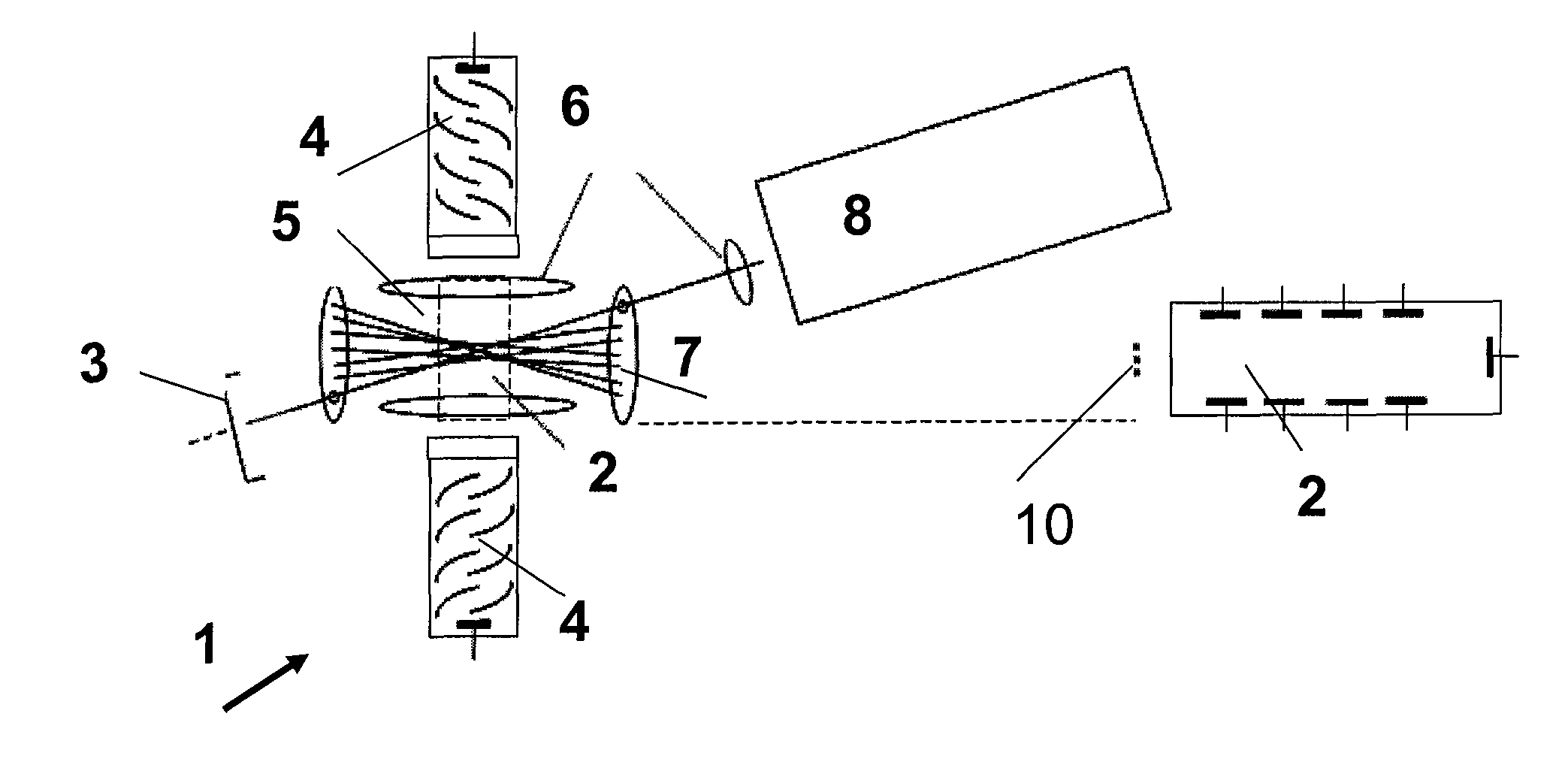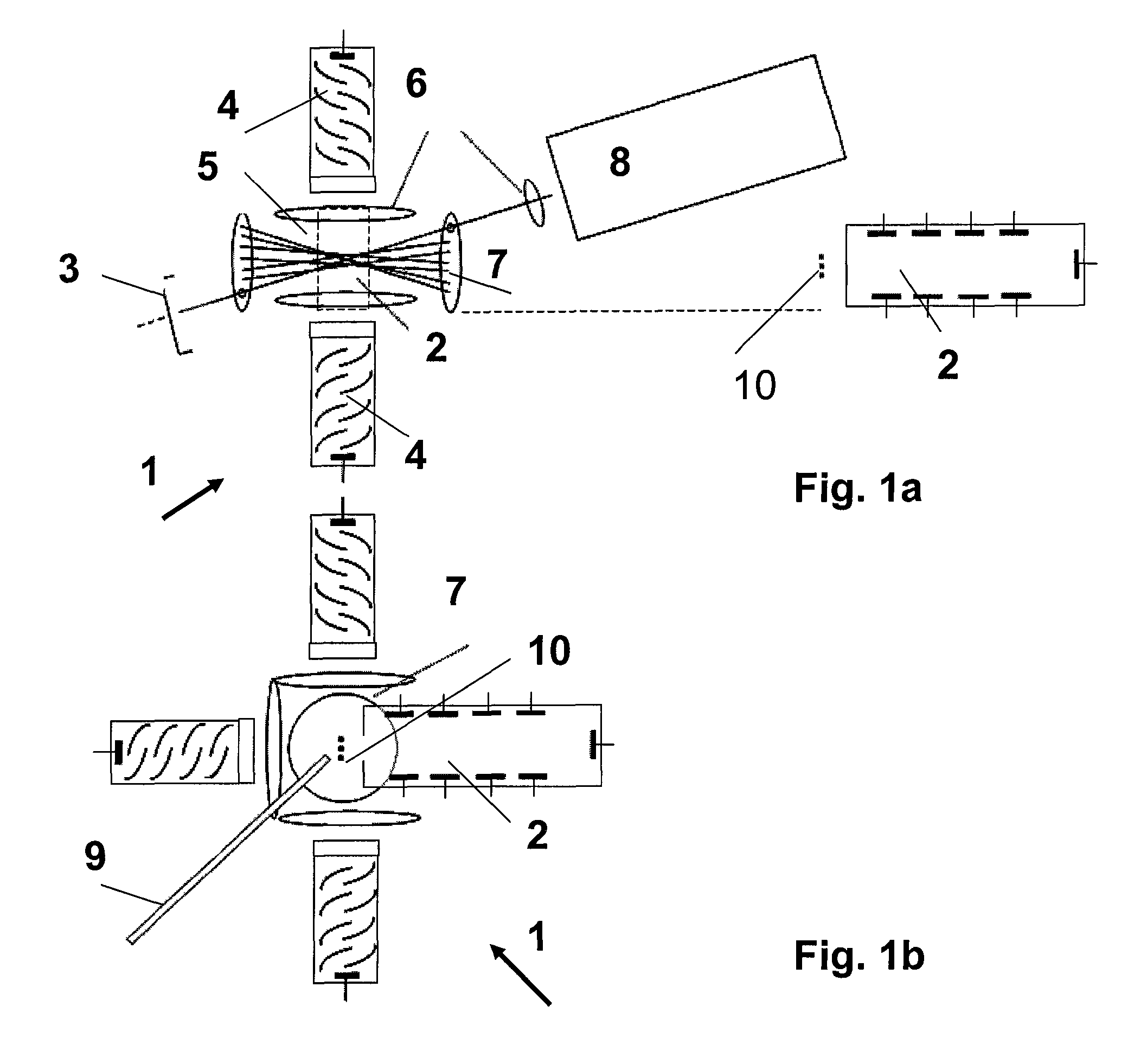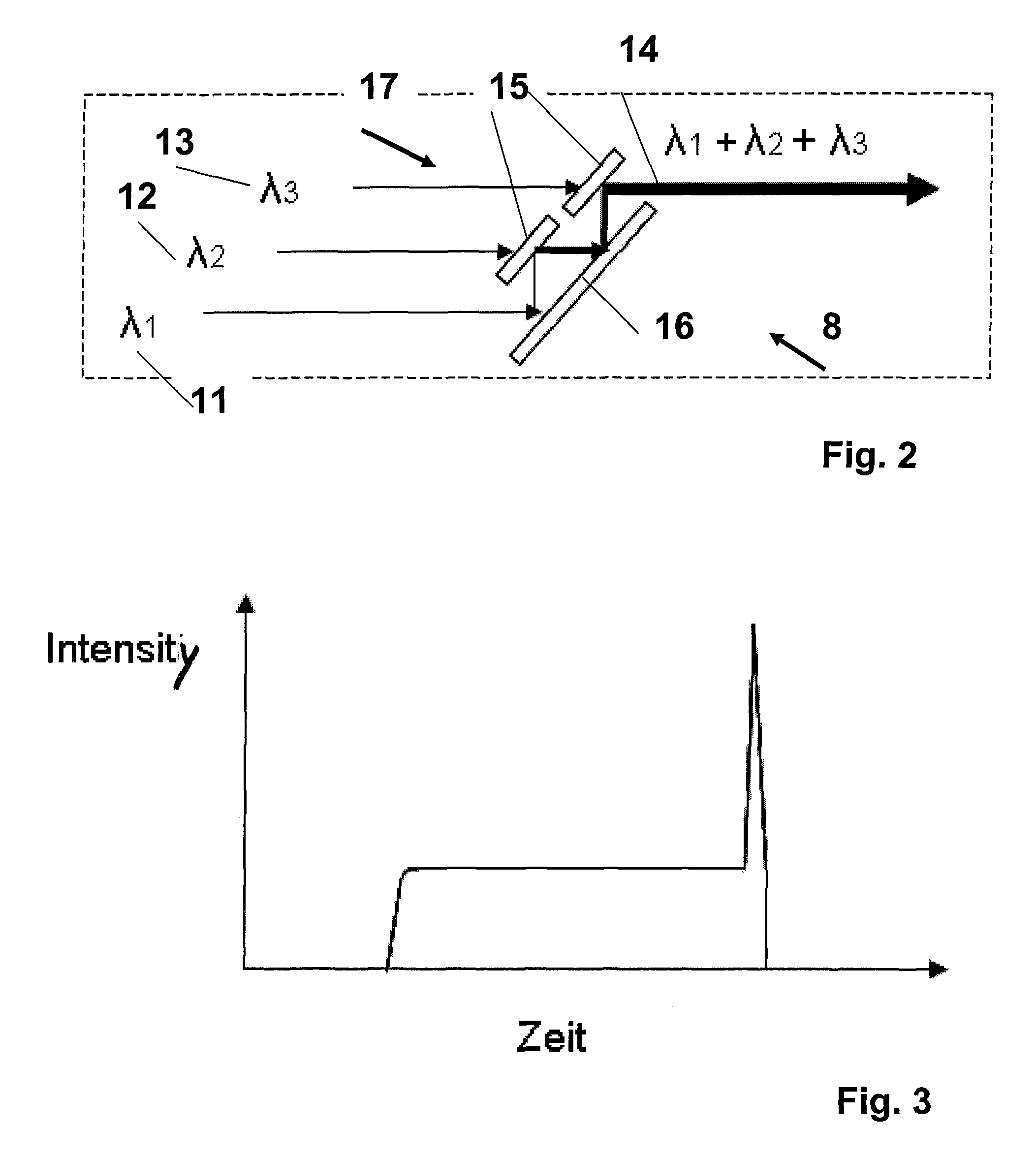Laser multi-sensor system for the selective trace analysis of organic materials
- Summary
- Abstract
- Description
- Claims
- Application Information
AI Technical Summary
Benefits of technology
Problems solved by technology
Method used
Image
Examples
Embodiment Construction
[0032]FIG. 1a shows a schematic sketch of the principle of the measurement arrangement. FIG. 1b shows the measurement arrangement from FIG. 1a, rotated by 90°. The preferred embodiment of a laser multi-sensor system 1 according to the invention illustrated in FIGS. 1a and 1b allows a long measurement path for the absorption measurement by means of a detector for absorption measurement 3, for example using IR radiation, through a planar multi-reflection cell 5. Here, the multi-reflection cell 5 has oppositely arranged mirrors 7 and optical lenses 6.
[0033]Furthermore, a large ionization yield for a coupled laser ion mobility spectrometer 2 is made possible, which is achieved by the multiple passage of the laser radiation, preferably UV radiation, through the sample 10. In FIG. 1a, the laser ion mobility spectrometer 2 (LIMS) is arranged perpendicular to the plane of the drawing, which is why it has been pivoted out to the right edge of the drawing for visualization reasons.
[0034]Moreo...
PUM
 Login to View More
Login to View More Abstract
Description
Claims
Application Information
 Login to View More
Login to View More - R&D
- Intellectual Property
- Life Sciences
- Materials
- Tech Scout
- Unparalleled Data Quality
- Higher Quality Content
- 60% Fewer Hallucinations
Browse by: Latest US Patents, China's latest patents, Technical Efficacy Thesaurus, Application Domain, Technology Topic, Popular Technical Reports.
© 2025 PatSnap. All rights reserved.Legal|Privacy policy|Modern Slavery Act Transparency Statement|Sitemap|About US| Contact US: help@patsnap.com



